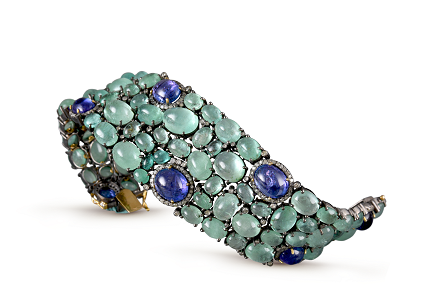For ages women have loved jewellery. But like any relationship, this association has evolved and jewellers need to reassess how well they know Indian women when it comes to jewellery purchase. Sanjana Parikh speaks to jewellers as they attempt to analyze what women really want

Stephen Hawking famously said that women are the most intriguing mystery. Market analysts have spent long periods of time studying their various moods, desires and demands and are still sometimes befuddled as to what women really want. But if there is one thing that everyone knows for sure it is women and their undying love for jewellery.
For centuries, Indian women have associated weddings with jewellery; and Indian parents cannot fathom the idea of marrying off their daughters without jewellery. Jewellery is considered ‘stree dhan’ which literally translates to woman’s wealth and is gifted to her upon her marriage. This forms a crucial part of Indian culture and thus a vital element of Indian ethos and sensibilities.
Vaibhav Saraf of Aishhpra Gems and Jewels says, “Earlier women would feel special when jewels were passed down from grandmothers, mothers to daughters. But today, they want customized pieces that are specific only to them. One-of-a-kind pieces that are exclusively crafted for consumers are what we are seeing now days. Even for brides, parents would earlier buy 80 per cent heavy jewellery while 20 per cent would be wearable, everyday jewellery. But now it has become 50-50. Transformative jewellery has taken the industry by storm. Versatility is the one thing women are looking for so that they can wear one piece in multiple ways .”

Gold which is considered a symbol of purity and prosperity has played an invaluable role in Indian weddings, not only because of its inherent value but also due to its underlying meaning. It is undeniable that gold jewellery plays an essential role during the lives of many women from birth to marriage to festivals and feasts. Indian culture is deeply associated with gold and gold jewellery and the role of gold jewellery in Indian society is crucial. Strong emotional response of the buyer joined with a compelling traditional bent of mind emphasizes the role of gold. The trend has seen several changes over a period of time and it also helps to transfer customs and rituals from one generation to the other.
Arvind Chordia of Saaz Jewels shares, “Gold jewellery is an inherent part of Indian culture. Since marriage is a once in a lifetime occasion, brides and families are ready to splurge on gold jewellery and buy heavy necklaces, oversized earrings and chunky bangles. The charm and elegance of traditional jadau and polki continues to this day and will also remain timeless. But at the same time women have become practical as well and are also moving toward lightweight jewellery featuring intricate carving and coloured stone studded jewellery .”

Jewellery was previously seen as a valuable investment and Indian parents would save up money for their daughter’s marriage. But today, jewellery faces stiff competition from experiences, travel, branded apparel and electronic gadgets which are increasingly becoming a part of Indian fabric.
As we move towards a more progressive society, women are increasingly making practical purchases rather than impulse purchases. “Compared to previous generations, today’s women are modern, working professionals, well-travelled and have a lot more exposure to the world around them. Women today prefer statement, but aesthetically classy pieces of jewellery. They would rather have three light weight, small stackable bracelets to wear close to their watch when rather than one or two chunky bangles ,” says Janak Jethani of Jet Gems.
Luxury items come with a hefty price tag which not all consumers are willing to pay. However, a desire to own them causes women to take it on rent for a special occasion without outright buying the product. Jewellery as a luxury item could potentially see this trend catching up as jewellery commands premium pricing. “I do believe renting jewellery will gain momentum in the years to come. How it will affect the industry I cannot say at this point. But renting of high end clothes and other luxury items is something that has been going on in the western world for decades. You can rent suits; you can rent dresses from the big brands. People are still buying pre owned luxury items as they become more affordable over time. A lot of people even purchase pre-owned items. The more choices people have the tougher decisions they have to make. Renting is something that I look at in a positive way rather than negative,” continues Jethani.
With increasing number of women entering the workforce, self purchase has filled jewellery showrooms with women itching to buy pieces for themselves. “We see a lot of working women who save up their money and come into our showrooms to buy their favourite pieces. As a result of this, everyday, work appropriate jewellery is selling very well. Even when they are getting married, they look for diamond studded pieces that can be broken down into smaller pieces for everyday . In 2020 we will see pink morganite and light green coloured stone jewellery doing well. Russian emeralds are ruling the trends and rose gold metal will continue its reign over gold and silver finishes,” says Rohan Sharma, RK Jewellers South Extension 2. Globalization and Digitalization have been the key drivers for the growth of luxury market in India and luxury sales today are ‘digitally influenced’. Millennial women are more inclined towards jewellery which is trendy and chic and at the same time affordable, fuss free and easy to wear. Retailers are ready to pull out all the stops to impress the elusive customer.
Be the first to comment